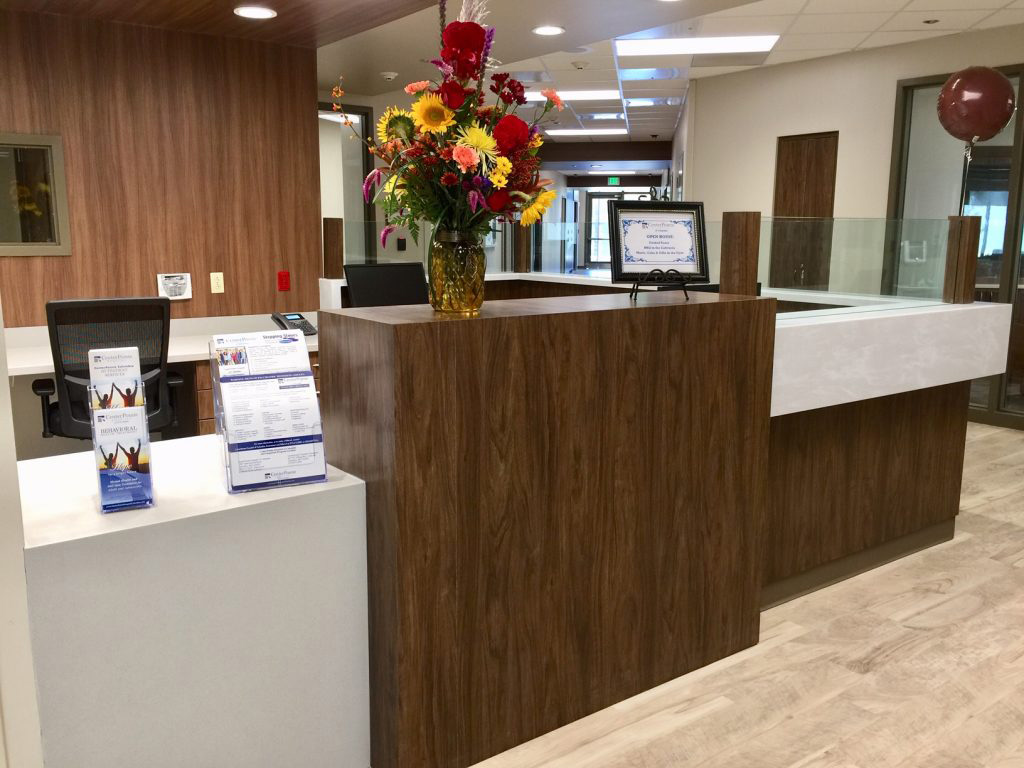Borderline personality disorder (BPD) is a complex mental health disorder that is characterized by instability and impulsivity. The symptoms of BPD can affect a person’s mood and self-image, as well as the quality and durability of their relationships.
In the fifth edition of the Diagnostic and Statistical Manual of Mental Disorders (DSM-5), borderline personality disorder is classified as a Cluster B personality disorder. The other three Cluster B disorders are histrionic, narcissistic, and antisocial personality disorder. The DSM-5 reports that the defining feature of Cluster B disorders is a tendency to act dramatically, emotionally, or erratically.
If a person who has BPD doesn’t receive the care they need, they may find it virtually impossible to enjoy a full and satisfying life. However, when they get effective treatment for borderline personality disorder from a reputable provider, they can achieve improved health and enhanced quality of life.
Signs & Symptoms of Borderline Personality Disorder
Most people who have borderline personality disorder are diagnosed as adults. However, research indicates that early signs and symptoms of BPD are often evident during childhood and adolescence.
According to the DSM-5, people who have BPD may exhibit the following signs and symptoms:
- Going to great lengths to avoid being abandoned, even when there is no credible suggestion that this is about to occur
- Engaging in a series of intense but unstable relationships that involve alternating extremes of idealization and devaluation
- Struggling with a persistently unstable self-image or sense of self
- Acting impulsively in at least two areas that can cause considerable harm, such as reckless driving, gambling with large amounts of money, spending sprees, eating binges, unsafe sex, and substance abuse
- Engaging in self-harm or continually making comments, threats, or gestures related to suicide
- Having dramatic mood swings that may involve anger, irritability, anxiety, and extreme unhappiness
- Persistently feeling empty or worthless
- Anger control problems, which may include lashing out with unpredictable rage and getting into physical fights on a regular basis
- Experiencing periods of stress-related paranoia or dissociation, which can include the sense that the person has become detached from their thoughts and feelings
As established in the DSM-5, a person must have at least five of the symptoms listed above to be accurately diagnosed with borderline personality disorder. These symptoms should be present in several different contexts.
Borderline Personality Disorder Statistics
The following statistics about the prevalence of borderline personality disorder are from the DSM-5:
- Experts estimate that the rate of borderline personality disorder among the general public is 1.6%-5.9%.
- In primary treatment settings, about 6% of people have borderline personality disorder.
- About 10% of people who receive outpatient mental health treatment have BPD.
- At the inpatient level, about 20% of patients who receive mental health treatment services have borderline personality disorder.
The National Institute of Mental Health (NIMH) has reported the following statistics about borderline personality disorder in the U.S.:
- 84.5% of people who have BPD have either a co-occurring mental health disorder or a co-occurring substance use disorder (which is the clinical term for addiction).
- In the past year, about 57% of people who have borderline personality disorder did not receive any treatment for this condition.
Borderline Personality Disorder Causes & Risk Factors
The likelihood that a person will develop borderline personality disorder can be influenced by several risk factors, including the following:
- Having a parent or sibling who has borderline personality disorder
- Family history of antisocial personality disorder, depressive disorders, or anxiety disorders
- Family history of substance use disorders
- Having been abandoned as a child or adolescent
- Personal history of physical, sexual, or emotional abuse
Gender can also be a risk factor for being diagnosed with borderline personality disorder, as women account for about 75% of all BPD diagnoses. However, some experts have questioned if women truly develop borderline personality disorder at such a considerably higher rate than men do, or if this statistic reflects inherent biases in the diagnostic process.
Potential Effects of Untreated Borderline Personality Disorder
Untreated borderline personality disorder can have a negative impact on a person’s physical, psychological, and socioeconomic well-being. Possible effects of untreated BPD include the following:
- Frequent conflicts with friends and family members
- Inability to form and maintain lasting healthy relationships
- Loss of personal support from loved ones
- Exposure to HIV/AIDS and other sexually transmitted infections
- Physical injuries due to reckless driving, fighting, or other impulsive behaviors
- Development or worsening of co-occurring mental health disorders
- Substance abuse, addiction, overdose, and death
- Financial problems
- Self-harm
- Suicide
The longer a person struggles with untreated borderline personality disorder, the greater the likelihood becomes that they will experience serious harm. For example, research suggests that as many as 10% of people who have borderline personality disorder will die by suicide. But when a person enters a borderline personality disorder treatment center, they can reduce their risk for incurring continued damage.
Levels of Care for Borderline Personality Disorder Treatment
CenterPointe Hospital of Columbia provides customized treatment for borderline personality disorder at the following three levels:
- Inpatient treatment: At our hospital, we have established separate age-appropriate inpatient units for children, adolescents, adults, and senior adults. In each of these units, features of inpatient treatment for borderline personality disorder include structured daily schedules, multiple forms of therapy, comfortable patient rooms, and round-the-clock supervision. Patients who receive inpatient treatment for borderline personality disorder typically remain in our care for seven to 14 days.
- Intensive outpatient program (IOP): Our IOP offers three hours of treatment for BPD per day, three days per week. During nontreatment hours, patients can return to their homes or to a supportive residence. Group therapy is the main method of treatment for borderline personality disorder at the IOP level. We also offer medication management services and family therapy on an as-needed basis. Patients may begin BPD treatment at the IOP level, or they may step down to our IOP after completing inpatient treatment. Most people remain in our IOP for four to six weeks.
- Traditional outpatient services: Traditional outpatient services can be a source of long-term support for people who are working to manage the symptoms of borderline personality disorder. At the traditional outpatient level, patients participate in individual sessions with a psychiatrist or a nurse practitioner. As with our IOP, patients may enter treatment for borderline personality disorder at this level, or they may step down to our traditional outpatient services after completing a higher level of care.
Types of Treatment for Borderline Personality Disorder
At CenterPointe Hospital of Columbia, a patient’s customized treatment for borderline personality disorder may include a variety of elements, such as the following:
- Basic medical care
- Medication management services
- Process groups
- Psychoeducational groups
- Experiential groups
- Art therapy
- Music therapy
- Acceptance and commitment therapy (ACT)
- Family therapy
- Individual therapy
- Cognitive behavioral therapy (CBT)
- Dialectical behavior therapy (DBT)
- Motivational interviewing
If a patient’s struggles with borderline personality disorder are accompanied by a co-occurring addiction, we can also incorporate detoxification and 12-Step support services into their treatment. For those who have co-occurring depression or certain other co-occurring mental health concerns, we may recommend transcranial magnetic stimulation (TMS).
Please note that every service we provide may not be available at every level of care or included in every patient’s treatment plan. If you have any questions about which therapies and services you may receive if you take part in treatment for borderline personality disorder at our hospital, please contact us directly.
Benefits of Our Borderline Personality Disorder Treatment Center
Choosing the right borderline personality disorder treatment center can be a challenging endeavor. What’s most important is finding the provider whose services and treatment approach feel like the best fit for you. Here are a few of the many benefits of receiving treatment for BPD at CenterPointe Hospital of Columbia:
- Safe environment – At CenterPointe Hospital of Columbia, nothing is more important to us than the safety of our patients, staff, and visitors. Our team is committed to protecting the well-being of every person who walks through our doors. We also place great emphasis on maintaining a respectful environment where all people are treated with compassion.
- Personalized care – The impact of borderline personality disorder can be quite different from one person to the next. The effectiveness of certain BPD treatment techniques can likewise vary from patient to patient. For these reasons, we are committed to providing every patient with a truly personalized treatment experience. We want to be sure that each person receives the focused services that will best address their specific needs and help them achieve their short- and long-term treatment goals.
- Experienced treatment professionals – Depending on which level of care a patient is in and what types of BPD treatment services they are receiving, they may work with a psychiatrist, a psychiatric nurse practitioner, a physician assistant, registered nurses (RNs), licensed practical nurses (LPNs), certified nursing assistants (CNAs), licensed clinical social workers (LCSWs), licensed professional counselors (LPCs), activity therapists, a dietitian, and other skilled professionals.
- Detailed discharge planning – The time a person spends in BPD treatment at CenterPointe Hospital of Columbia can be a vital part of their journey toward improved health. But we know that our patients’ efforts to achieve better health will continue long after they have transitioned out of our care. To assist them in these efforts, we develop detailed discharge plans for all who receive treatment for borderline personality disorder at our hospital. These plans ensure that our patients are connected with the resources that can support their ongoing progress.
This content was written on behalf of and reviewed by the clinical staff at CenterPointe Hospital of Columbia.














